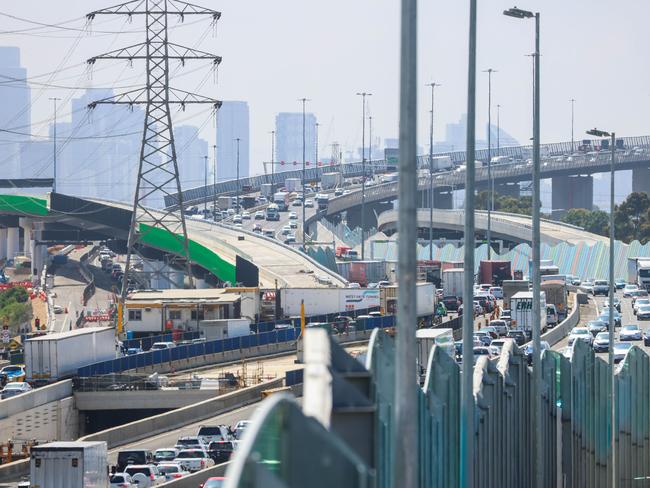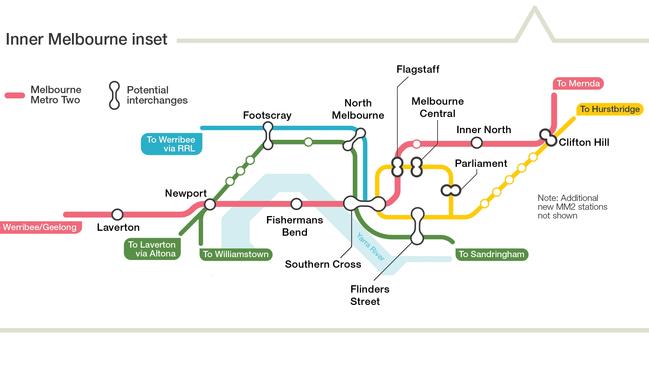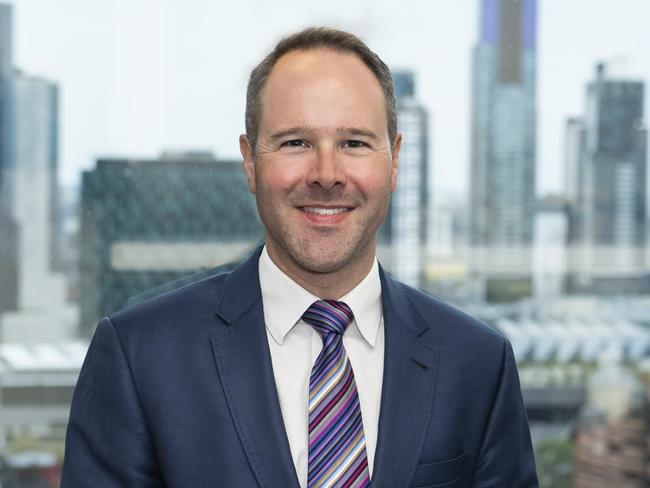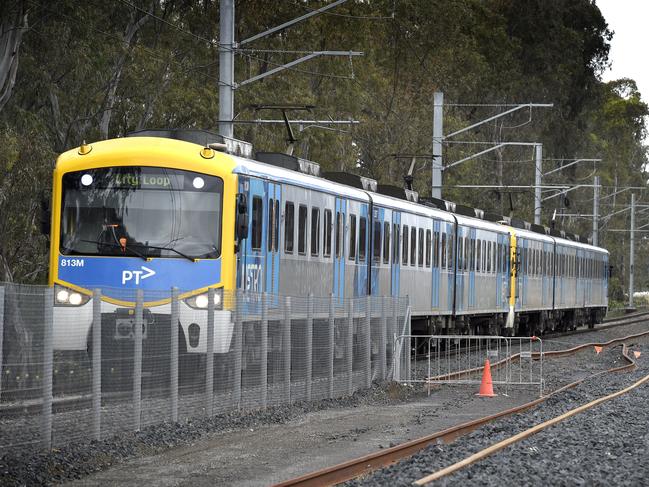‘We’re planning to be London’: Urgent transport boost needed as Victoria’s population explodes, expert says
Victoria’s public transport system must be urgently expanded as the population explodes, a leading expert has warned, or the state is at risk of crippling congestion and poor liveability.
Victoria
Don't miss out on the headlines from Victoria. Followed categories will be added to My News.
Victoria has had the Big Build – but it now needs to start work on the Bigger Build, a leading transport infrastructure expert says.
The state has hit a population of seven million this year, according to Australian Bureau of Statistics projections, with eight million people now expected by the early 2030s.
Monash University expert Graham Currie said this expected growth meant projects to better connect Victorians had to begin soon.
More rail lines and cross-city tunnels should be on the agenda for future Melbourne, he said. And public transport was more important than investing in the road network.
“We are in on an expansion path here and public transport services are just not at the standard ready for us to be London — and we are planning to be London,” he said.


Professor Currie added that the expansion of the rail network was important because it could handle high volumes.
“Increasing the size of roads just stokes the fire of the problem.”
Demographer Mark McCrindle told the Herald Sun that Victoria could become a “victim of its own success” if it surges towards eight million without the correct infrastructure.
He said if Victoria’s infrastructure could not “keep up” with its population, congestion would rise and liveability would be impaired, leaving the state with a dilemma.
“They’ll be like: ‘We’ve got the growth, but we’ve lost the lifestyle’,” he said.
Mr McCrindle said this meant governments could not afford to stop investing in roads.
“I think that ongoing investment in the roads is key because if the future is sprawl, the only way that’s going to be managed is through good road networks.”
But almost a third of the 2.5 million homes the state government wants built by mid-century to accommodate the booming population are in Victoria’s 10 poorest council areas, sparking calls for more infrastructure to avoid “intolerable” disadvantage.
According to an analysis of the state government housing targets by the Victorian Council of Social Service, the City of Melton on Melbourne’s outer fringe faces a 190 per cent increase from 69,300 to 201,300 homes.
Professor Currie said it was difficult to prioritise the most important future transport
infrastructure project, namely the Suburban Rail Loop, Metro 2 and rail network extensions.
“I think they’re all good and we should be doing them all. That’s the truth of it.” he said.
“We need a Bigger Build. I know the state is struggling (financially).
“The Big Build that we have done has been good but we need more of that.”
He backed the idea of a Metro 2, another cross-city rail tunnel, to link to the Fishermans Bend redevelopment.
“Roads in that area are already congested. How are we going to add in another 200,000 people? I don’t see how it can be done. We’re struggling to put a tram in.”

Infrastructure Victoria (IV) last December declared that a better bus network was part of the solution for transport challenges in the west, north and southeast.
“While Melbourne is likely to remain a car-dependent city, a fast, frequent and better-connected bus network is better than being stuck in traffic,” chief executive Jonathan Spear said.
Dr Spear told the Herald Sun that the organisation’s research had recognised better rail services were also vital in greenfield areas.
“Our strategy has identified the need to improve bus and rail services in the north towards Wallan and Wollert and in the southeast towards Clyde. Improving the frequency of services west of Melbourne, towards Wyndham Vale and Melton is a priority as well,” he said.


Other possible options would be to “disentangle the City Loop” and have more cross-city rail services like the Metro Tunnel, he said.
Mr Spear said other solutions could include “straightening out” existing bus services to make them faster and more frequent, and to have bus rapid-transit corridors.
Tram services needed to be extended to cater for new inner-city residential precincts such as Fishermans Bend and Arden in North Melbourne, he said.
He added that cheaper off-peak fares could also enable more people to use public transport, spread the demand and save travellers money.



